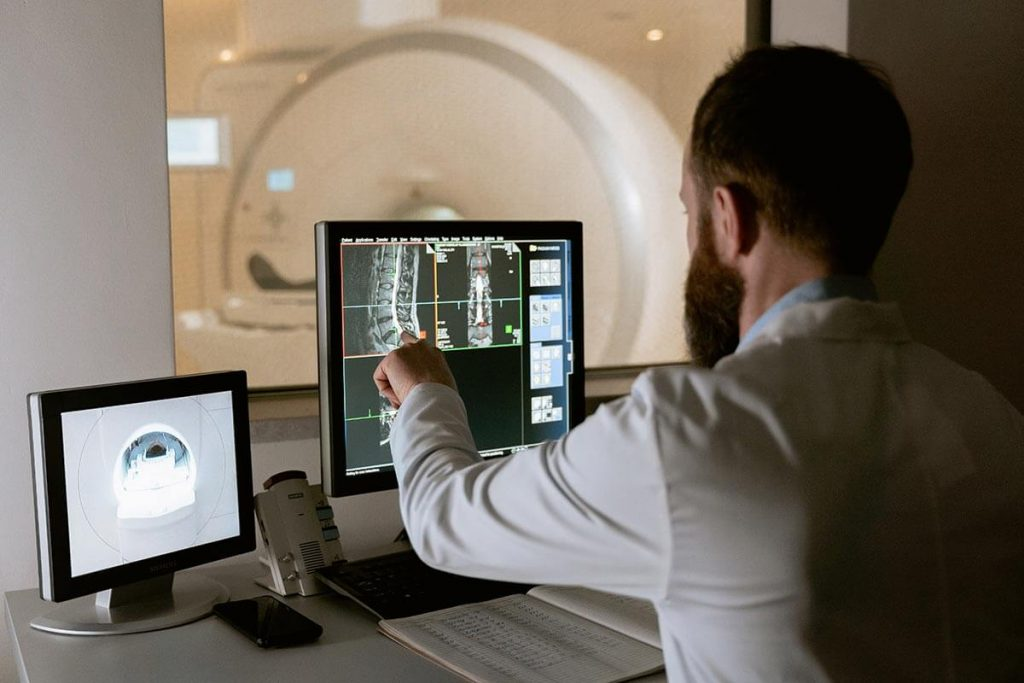
What is Chronic Pain?
Pain is felt when the nervous system is activated. It is your body signaling to you that something may be injured, diseased, deteriorating or infected. The two main types of pain are acute pain and chronic pain. Acute pain goes away after the body heals from something like an injury or surgery. It is short-lived pain.
The standard chronic pain definition is that chronic pain is the type of pain that lasts for more than three months. It could be 3-6 months or longer. In general, it is pain that either lasts past the normal time when the body is healed from an injury or surgery, or it endures because of disease, deterioration due to aging or even an unknown cause, like fibromyalgia.
There are different chronic pain types.
-
Back pain
There are approximately 16 million adults who experience chronic back pain.
-
Joint pain
15 million people are experiencing severe joint pain and half have persistent pain.
-
Neck pain
Approximately 50-85 percent of people experiencing neck pain experience symptoms and eventually end up with chronic pain that interferes with their ability to do various activities.
-
Muscle pain
Chronic muscle pain is caused by diseases like fibromyalgia, chronic stress, injuries that do not heal correctly, certain medications and infections. Muscle pain is often accompanied by joint pain or symptoms like muscle cramps.
-
Nerve pain
Neuropathic pain is also common with 30-40 percent of people experiencing chronic pain also enduring neuropathic pain.
-
Headaches and Migraines
Approximately 3-5 percent of adults experience severe headaches and migraines. Headaches also include tension headaches and cluster headaches.
There are other types of chronic pain like orchialgia (testicular pain), cancer pain and even pain that seems to have no cause.

Variety of Symptoms
One of the challenges of chronic pain is that pain expresses itself in numerous ways. Where you experience the pain may not be where the cause of the pain is located.
Pain signals travel along the central nervous system (brain and spinal cord) and the peripheral nervous system (motor and sensory nerves throughout the body). Sensory nerves send signals in response to an injury, disease or condition like arthritis to the spinal cord. The signals are carried to the brain where they are resent down the spinal cord and then optimally sent to the area that originally sent the signals via nociceptors (pain receptors).
However, pain signals can be misdirected, making it more challenging to find the source of the pain.
Chronic pain can be felt in the following ways.
-
Intermittent or unrelenting pain
-
Shooting pain that feels like an electrical charge
-
Aching
-
Burning pain
-
Mild pain
-
Stiffness or tightness that makes movement painful
Chronic pain can interfere with your lifestyle which means you must learn how to live with chronic pain to continue living an entire life. The effects of chronic pain include difficulty sleeping, fatigue, irritability, inability to enjoy favorite activities and difficulty working. Pain becomes a focal point in your life.
Causes
There are numerous causes of chronic pain. They include but are not limited to the following.
-
Degenerative diseases like osteoporosis and rheumatoid arthritis and spinal disc disease
-
Congenital conditions like scoliosis or abnormal musculoskeletal conditions
-
Traumatic injury, especially to the brain or spinal cord
-
Normal aging leads to deterioration of the spine, muscles and/or bones
-
Diseases like diabetes, cancer and inflammatory bowel disease
-
Central nervous system conditions like sciatica
-
Infections
-
Previous surgery
-
Behaviors like an inactive lifestyle, consistently poor posture or repeated over-exertion like in sports or at work
As you can see, there are many chronic pain causes. As mentioned, the source of chronic pain may not be identifiable.
Diagnosis and Tests
There are various ways a doctor will try to diagnose the source of chronic pain. First, the doctor will perform a physical exam and ask many questions about your lifestyle, how you experience the pain, what seems to trigger the pain, medications you take, how long you have experienced the pain and so on. The questions and physical exam can help the doctor decide which diagnostic tests to order.

-
Lab tests – blood tests can reveal diseases like rheumatoid arthritis or organs that are not functioning correctly
-
X-rays – may identify bone issues like arthritis or fractures that are not or did not heal correctly
-
CT scan – could reveal issues with soft tissues, nerves and bones through the production of a cross-section image of the body
-
MRI – could reveal issues with soft tissues, nerves and bones, including compressed or pinched nerves
-
Nerve conduction tests – nerve compression or nerve damage identified by administering one or more nerve tests that include electromyography (EMG), nerve block, nerve conduction velocity (NCV) and/or quantitative sensory testing (QST)
These are some of the primary tests used to diagnose the source of chronic pain, but there are others. They include a discography, myelogram, ultrasound imaging and bone scan.
The source of chronic pain is not always identifiable. Psychogenic pain is pain where there is no physical cause that can be found.
Treatments for Chronic Pain
Based on the diagnosis, the doctor will develop a chronic pain treatment plan that will include several interventions for pain management. You should become an avid participant in the treatment plan because treatment plans include steps you can take in addition to treatments delivered by medical professionals. Each treatment plan is unique.
-
Medications (over-the-counter and prescription medicines)
-
Injection therapies, i.e. steroid injections
-
Electrical stimulation
-
Exercise
-
Making lifestyle changes that include not smoking, losing weight and reducing alcohol consumption
-
Acupuncture
-
Surgery
There is a psychological element in pain because it causes a person to focus on it which can lead to even more pain expression. In these cases, the treatment plan may include stress management, relaxation training and biofeedback. It could also include taking prescription antidepressants. Antidepressants can act as pain killers in some cases of chronic pain. The reason they work is still not fully known.
Conclusion
There are always medical studies taking place that are focused on chronic pain and finding new treatments that are safe and effective. For example, they are investigating using non-opioid-based drugs and targeted rewiring in the brain to change pain signaling. It is important to work closely with your pain specialist who stays informed on state-of-the-art treatments. Each year more is learned about chronic pain, and that brings hope to millions of people living with pain daily.
Sources
- https://read.dukeupress.edu/demography/article/58/2/711/168526/Pain-Trends-Among-American-Adults-2002-2018
- https://europepmc.org/article/med/33990113
- https://hpi.georgetown.edu/backpain
- https://www.cdc.gov/arthritis/pain
- https://www.ncbi.nlm.nih.gov/pmc/articles/PMC2974793/
- https://www.frontiersin.org/articles/10.3389/fpain.2020.00001/full
- https://pubmed.ncbi.nlm.nih.gov/29527677/